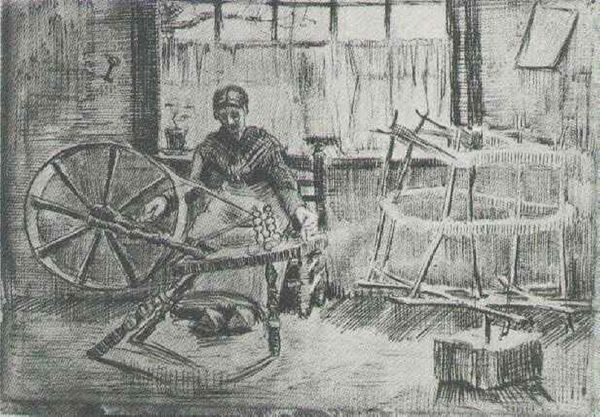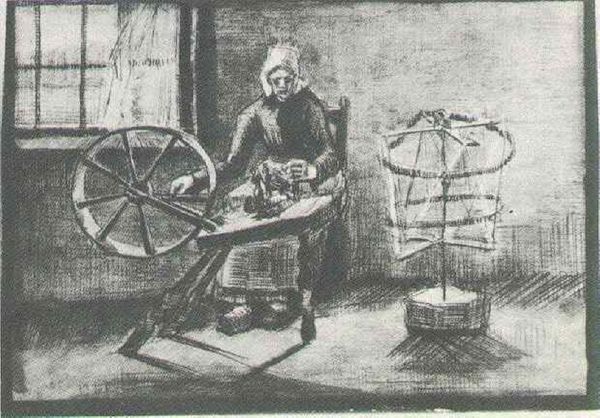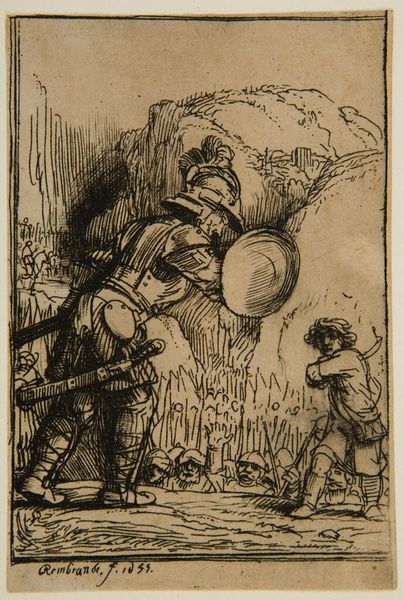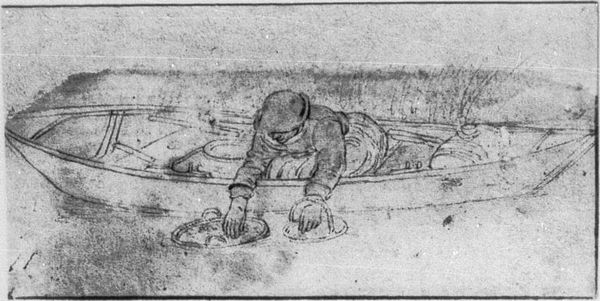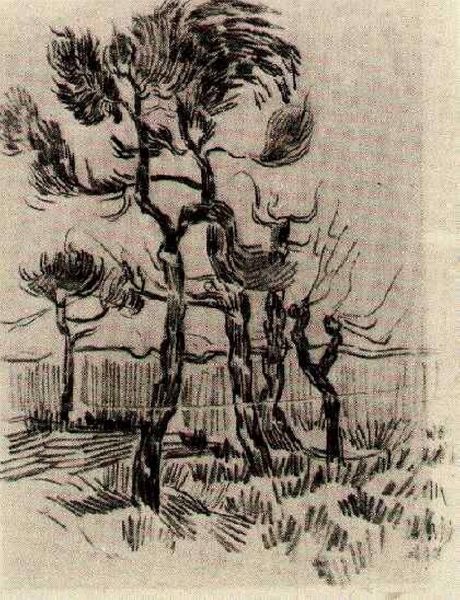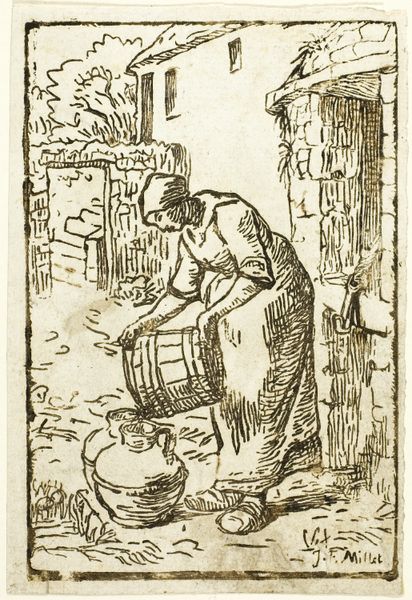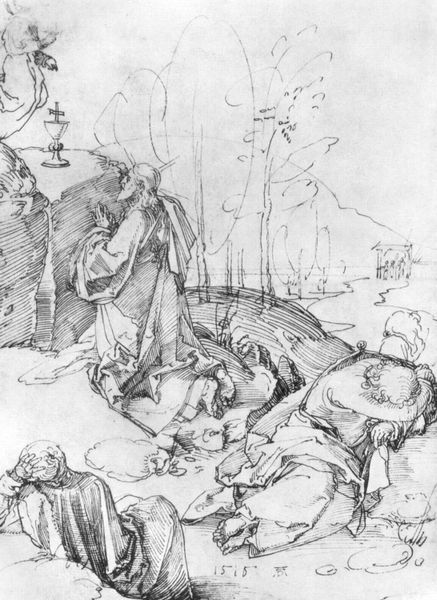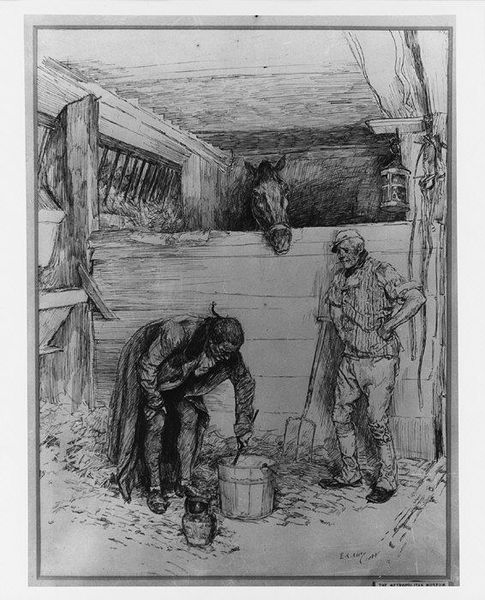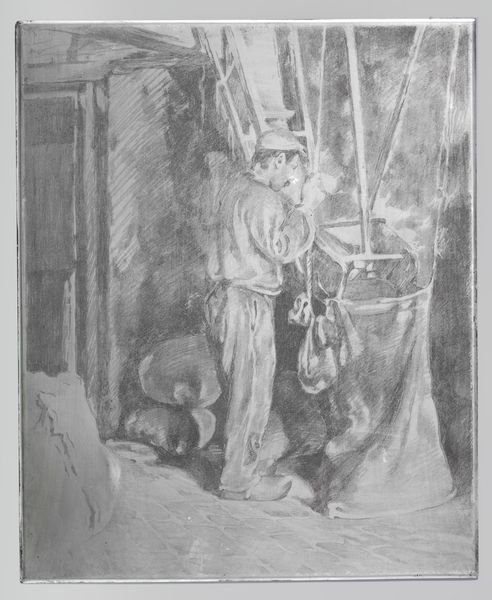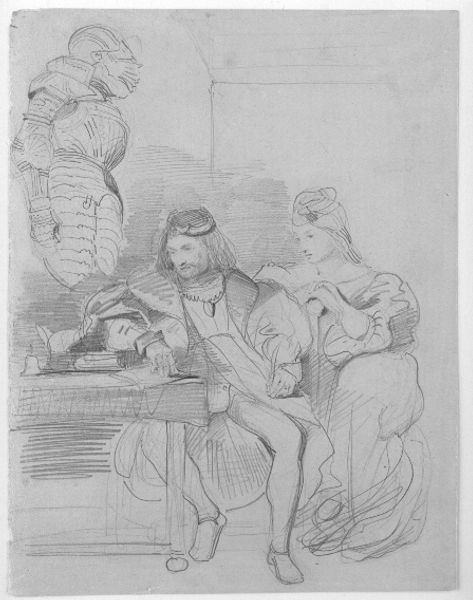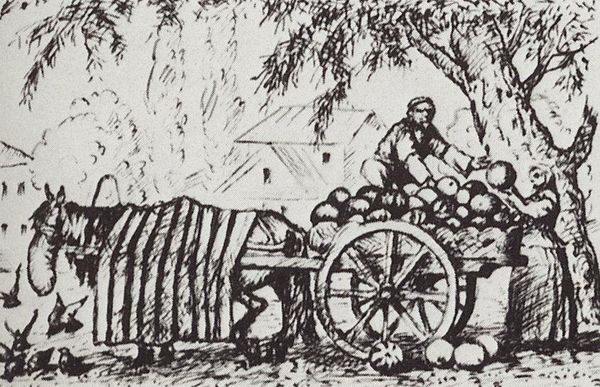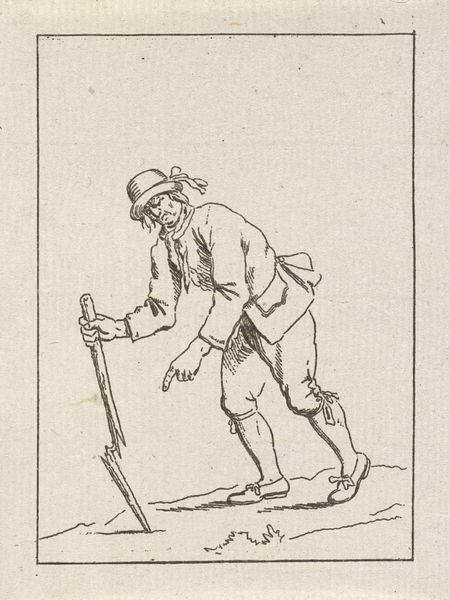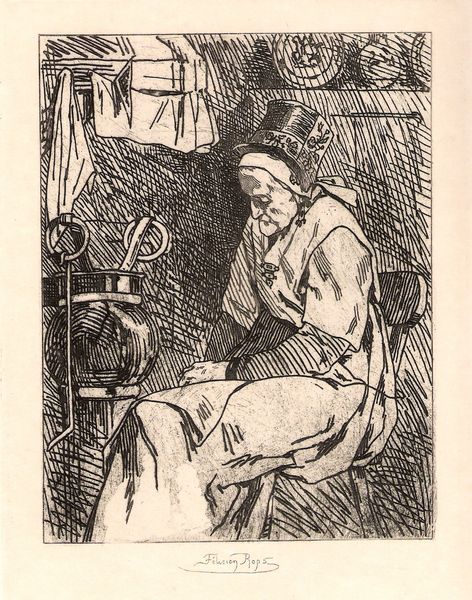
drawing, ink
#
drawing
#
baroque
#
figuration
#
ink
#
genre-painting
Copyright: Public domain
Curator: This delicate ink drawing, titled "Bij De Wagenmaker," or "At the Wheelwright's," was created by Hendrick Avercamp in 1634. The artwork captures a scene of tradesmen engaged in their craft. Editor: My immediate reaction is one of quiet observation. The drawing is so detailed, almost documentary. I notice the looping lines that contour the figures, and the carefully stippled shadows create a sense of depth. It feels meticulously constructed within this oval format. Curator: Indeed. Avercamp often focused on scenes of daily life, providing us with a glimpse into the economic activities of the Dutch Golden Age. The wheelwright, a crucial figure in the pre-industrial world, becomes emblematic of labor and craftsmanship. Consider the political implications of capturing everyday industry at a time of vast wealth accumulation and trade expansion. Editor: I agree that the social context is fascinating, but I'm drawn to the spatial arrangement within the oval frame. The way the foreground with the main wheelwright seems to compress, while the background expands to the town square in soft, airy strokes. I read the whole picture as a composition, carefully arranging solids and voids to guide the viewer's eye through the artist’s chosen depth of field. Curator: Absolutely. But viewing it solely through formalism might overshadow the artist's socio-political message. These drawings are important cultural documents too. I mean, what story does this work tell about Dutch society and its values? Are we supposed to see hard labor as virtuous and central to economic progress? Or perhaps more plainly, the daily routines of lower-class merchants that kept Dutch society moving? Editor: Perhaps we’re meant to feel all these emotions! It’s a successful composition precisely because it elicits multiple layers of analysis. I might appreciate its tonal range while you’re considering Avercamp’s engagement with emerging societal stratification! It is indeed a document of value both artistically, structurally, and, as you put it, politically.
Comments
No comments
Be the first to comment and join the conversation on the ultimate creative platform.
